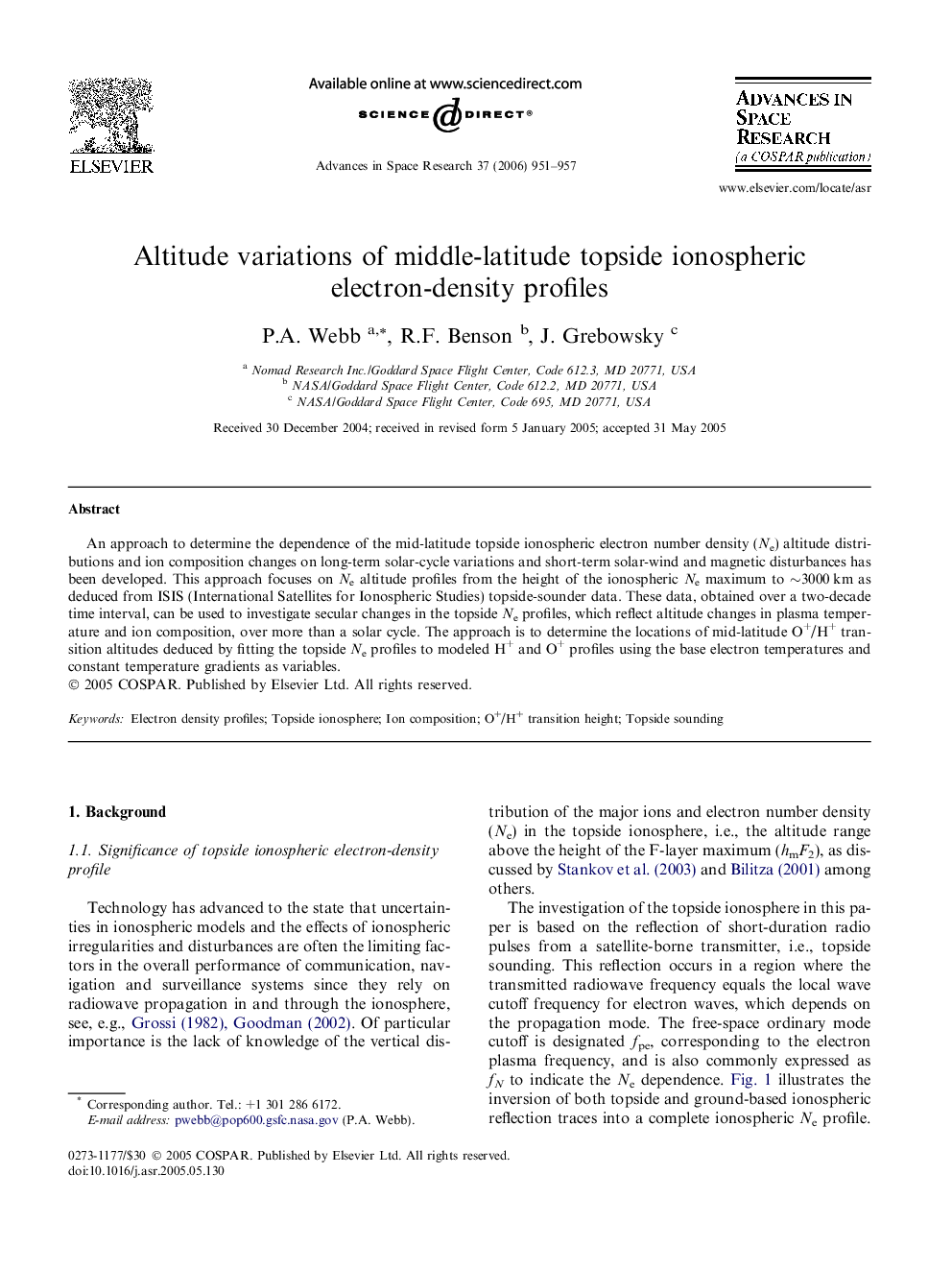| Article ID | Journal | Published Year | Pages | File Type |
|---|---|---|---|---|
| 1769237 | Advances in Space Research | 2006 | 7 Pages |
Abstract
An approach to determine the dependence of the mid-latitude topside ionospheric electron number density (Ne) altitude distributions and ion composition changes on long-term solar-cycle variations and short-term solar-wind and magnetic disturbances has been developed. This approach focuses on Ne altitude profiles from the height of the ionospheric Ne maximum to â¼3000Â km as deduced from ISIS (International Satellites for Ionospheric Studies) topside-sounder data. These data, obtained over a two-decade time interval, can be used to investigate secular changes in the topside Ne profiles, which reflect altitude changes in plasma temperature and ion composition, over more than a solar cycle. The approach is to determine the locations of mid-latitude O+/H+ transition altitudes deduced by fitting the topside Ne profiles to modeled H+ and O+ profiles using the base electron temperatures and constant temperature gradients as variables.
Related Topics
Physical Sciences and Engineering
Earth and Planetary Sciences
Space and Planetary Science
Authors
P.A. Webb, R.F. Benson, J. Grebowsky,
